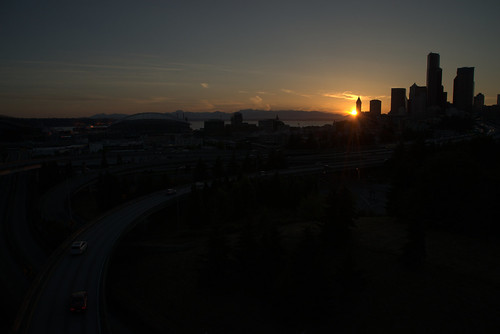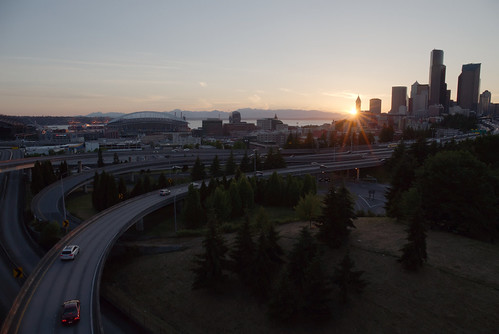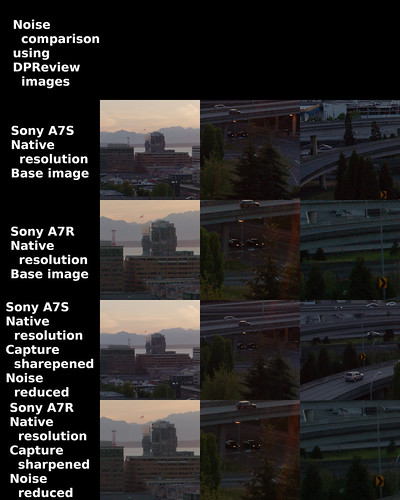I guess my Gears are easily Ground.
It started many years ago when I rode motorcycles. My Gears were Ground by various reviewers who either said things that were silly, all too often wrong, or failed to mention things that would be important to a rider.
The first example is of a review written about a Kawasaki touring bike. The reviewer noted all the usual things, except one. The tourer had a clearly _over_ spec'd alternator. Why would that be? Well, Kawasaki knew that buyers of their tourer would want to add accessory lights and things that would use the extra juice. But reading the review, no one ever knew what the standard issue bike was capable of.
The second example involves the early Ducati 900SS. They are narrow, light, and made sufficient horsepower to throw you down the road at 135mph in stock trim. More importantly was the fact the bike was rock solid stable at all speeds. It was like riding a laser beam. I kid you not. The stability instilled a certain confidence.
Compared with this, Japanese motorcycles from the 1980's tended to wander, have slightly vague handling, and might induce a "tank slapper" under the wrong conditions. I know these things first hand because of the RD400, 550cc Vision, 650 Seca, GS500, and three road-worthy Ducatis (bevel and belt-drive) I used to own. Fortune was really on my side at the time as I got to ride one-each of every model bike ever made or imported to the US during the early to mid-1980's. I accidently bounced the valves of a Kawasaki 750cc Turbo prototype. 14,000RPM was a bit beyond spec, but the bike survived with zero problem. Yet it was the Ducati that instilled confidence.
This is what I look for in reading reviews. Confidence. I want confidence that people know what they're talking about. I want confidence that their findings are worth considering.
A photography example of what I mean comes from reading just about anything written by Geoffrey Crawley. His reviews were in-depth, concise as possible, and informative. If there is a detail that he felt was important to share, he would expand the subject until everything became clear, such as when he wrote about the 1/1000th of a second top speed of the original Nikon F. I have confidence that he knows what he's written about.
Similarly, I enjoy reading Roger Cicala at Lens Rentals. He posts not just his findings, but _how_ he got to those findings in the first place. He publishes his methods and _reasoning_ behind those methods. It's a real joy to read, learn, and understand. M. Cicala instills confidence.
What fails to instill confidence is when well-established reviewers make decisions, "test" something, assign numbers, and post the "results" without sharing at the same time clear methods and limitations. Specifically, converting images to TIFF, using in-camera JPG processing, or image downsizing to "normalize" (whatever that means in this context) all have their problems from an image quality measurement and comparison point of view. But I never knew about the limitations until I dug into the subject. Information wasn't easy for me to find.
Why is any of this even remotely important to me? I prefer accuracy and full truth so that I can make the best informed purchase and use decisions that I can. I'd like to be able to consider the trade-offs as they really are.
In the case of the Sony A7S, I passed on two inexpensive, good condition examples thinking that they were of lesser stills image quality than the A7 or A7R. I'm not sure what the real answer is, but I'm learning it's not exactly how I read about it on various "reviewer" sites. Of course it's too early for me to know if it's worth plunking down good hard earned money for one.
Building on the previous blog entry, I was interested in seeing what happened to Sony A7S and A7R DPReview supplied sample AWR (RAW) images when I applied Rawtherapee Capture Sharpen and Luminance Noise Reduction. Capture Sharpen should be obvious since the A7S reportedly comes with an AA filter. Noise Reduction would be applied to see if the heavily amplified dark areas of the scene could be quieted down. The A7R dark areas in particular look to me pretty ghastly at the native sensor resolution image size compared to the A7S. Perhaps noise reduction could help the A7R image?
Setup~
- Sony A7S and A7R images downloaded from DPReview
- Rawtherapee
- Adjust Lightness +30
- Adjust Curves by raising the middle
- Capture Sharpen
- Noise Reduction (adjust sliders to balance noise against "water color" too smooth effects)
NOTE: the DPReview images were 1.7 and 2EV underexposed and filed under the heading of "Dynamic Range in the real world." They were trying to share something they "saw" regarding noise control and dynamic range. So I needed to do what they did, raise the shadows to the point the overall image looked somewhat OK, then consider the noise and dynamic range, particularly in the dark amplified areas. Where DPReview used Lightroom's Exposure Value slider, I used Rawtherapee's Lightness so as to avoid blowing out the highlights.
Comparison ~
DPReviews base image
Processed image
Comments ~
Considering how dark the shadows are in the original un-modified image are, they were shot 1.7EV and 2EV under-exposed, the processed results are rather amazing. I could never ever dig this deep into the shadows with my old Canon DSLR systems. Sony has done a great job.
Looking again at the original native size images, the A7R shows more noise than the A7S in the shadows. To me the difference is obvious. I'll say it again, the A7S native size image heavily amplified shadow area image shows _less_ noise than the native size A7R image.
Then I did two things. I Capture Sharpened each native size image and Noise Reduced them.
The Capture Sharpen step makes the A7S image very crisp and sharp-looking. The A7R gets that little bit of extra sharpness, too. I've come to like using this function early in my image processing. Images don't look overly sharp to my eyes.
As I've said else-where, what surprises me is that the A7R no-AA filter image isn't sharper looking than the AA filtered A7S. I'm not sure how to evaluate this. Though perhaps it should be noted that the "One Way" sign is nearly readable in the A7R Capture Sharpened/Noise Reduced image.
Looking at the effect of Noise Reduction on the A7S and A7R image shadow areas gives just about what we might expect. The A7S goes from a small noise to even smaller noise patterns. The A7R goes from moderate sized noise to smaller though still obvious noise patterns.
A friend sent me samples of what can happen when using a specialized noise reduction software. The results are impressive. In fact, I can easily imagine that a properly-processed very under-exposed image can be massaged into something pretty darned nice. My suggestion would be if the highlight areas aren't showing noise, then mask the shadow areas and apply noise reduction there. At which point we've crossed over from considering the sensor to taking advantage of advances in image processing software.
Coming back to sensors and working with several Sony A7S AWR (RAW) sample images downloaded off the 'net I feel I'm beginning to understand what Michael Reichmann was saying about medium format sensors and the A7S. I'm not sure it adds up to much. I don't hear people raving about the A7S image quality over, say the A7 or sensors from other camera manufacturers. Perhaps it only matters when the winters are dark, cold, snowy, and I have way way too much time on my hands, but I think there _might_ be something there.
Chasing Pixies has become my day job.
Oh, but I have one more step to take in this Wacky Adventure. Stay tuned for part Three.



No comments:
Post a Comment